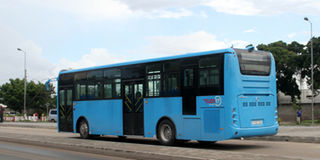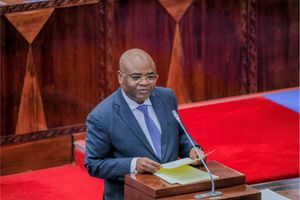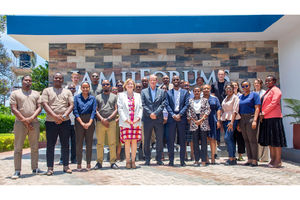Bus Rapid Transit is improving passengers’ travelling experience

What you need to know:
- A relatively recent idea is that of the BRT which is now adopted in many large cities. It is considered to be cheaper to construct and operate.
- The idea of a BRT, is that buses have their own dedicated bus lanes.
President Samia Suluhu Hassan’s recent two-week working tour in France and Belgium is hailed as a major success. Among the agreements that were reached, is one on the major rehabilitation of Terminal II of the Julius Nyerere International Airport. It will be recalled that this terminal, whose construction was supported by the French Government, was designed by a French architect, and was constructed by a French Engineering Company. It was opened by President Nyerere in 1984.
The other agreement is the financing of the construction of Phase-V of the Bus Rapid Transit (BRT) project in Dar es Salaam. In this article, we look at why BRT is important - and what should be done to make it a success.
Cities the world over are grappling with the problem of mass public transport. One problem that is encountered is avoiding public transport buses from getting caught up in the ever-growing traffic congestion, a result of the massive growth of the private car and the spatial expansion of these cities (urban sprawl).
When buses get caught up in traffic congestion, they become uncomfortable and inefficient. This encourages people to turn to the private car, which in turn leads to further congestion, and an even more inefficient public transport system. This has led to governments investing in public transport systems such as underground and over ground trains whose movement is not hampered by motor traffic congestion. A relatively recent idea is that of the BRT which is now adopted in many large cities. It is considered to be cheaper to construct and operate.
The idea of a BRT, is that buses have their own dedicated bus lanes. They are therefore, not caught up in traffic congestion, can move faster, and can therefore attract car owners to leave their cars behind and travel on the faster, cheaper and comfortable BRT.
In terms of history, the first BRT system in the world was the Bus-way in Runcorn, England, which was first conceived in the Runcorn New Town Master plan in 1966. But it opened for services in October 1971. All its 22 kilometres (14 miles) were operational by 1980. The second BRT system in the world is the Rede Integrada de Transporte (RIT: integrated transportation network), implemented in Curitiba, Brazil, in 1974. Since then, BRTs have been adopted in many cities with improvements based on local situations.
For a transit system to be a “true” BRT, five characteristics are considered essential: One, there must be bus-only lanes; two, bus-way alignment must keep buses away from the busy curb side where cars are parking, standing, and turning; three, there must be an off-board fare collection system; four, there must be prohibition of turns for traffic across the bus lane at intersections; and five, there must be platform level boarding.
These features most significantly result in a faster trip for passengers and make travelling on BRT more reliable and more convenient; attracting car owners and, therefore, reducing congestion and pollution. If buses run on electricity - as President Hasan is envisaging - emissions will be minimised: a no-mean contribution to fighting global warming.
An efficient BRT system saves passengers time, money and stress; improves their health, and giving them good travelling experience.
In Tanzania, the City of Dar es Salaam, given its size, was the first urban area in the country to get public transport way back in 1949. As a result of overcrowding on the existing buses and growing traffic congestion, the government first mooted the implementation of a BRT system in 2003.
In 2008, Japan International Cooperation Agency was invited to design a master plan for the city’s transport. A bus rapid transit (BRT) system was proposed. The project was placed under the Prime Minister’s Office - and a Dar Rapid Transit Agency (DaRT) was created through a government notice on May 25, 2007. A 130km bus rapid transit stsyem was planned to cover over 90 percent of the city’s population and the project was split into six phases. As of 2022, phase-I is operational since May 2016, and Phase-II is under construction. The President has just secured funding for Phase-V.
To make BRT a success, bus-only lanes must be respected by all: “big” people, machingas, etc. BRT must be run efficiently, with adequate buses. The sight of passengers crowded in buses or at terminals does not encourage car owners to leave them at home.
Given that there could be considerable distances between the homes of car owners and BRT terminals, there is the need of making adequate and safe car parking provisions at these terminals, where cars can be left for a whole day, as owners take to the BRT facility.





